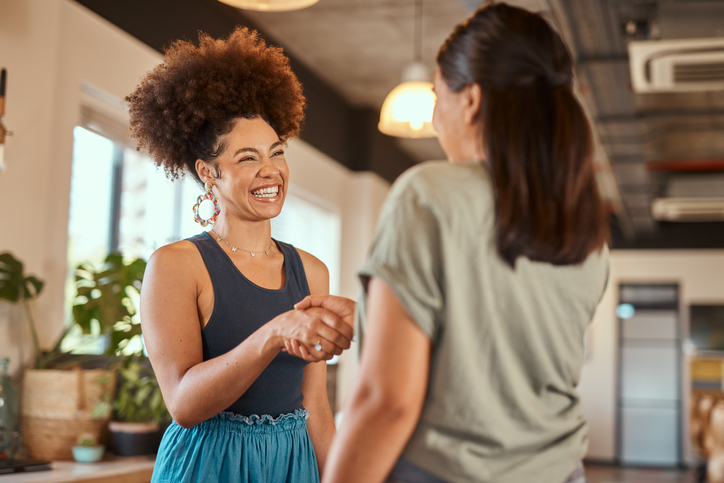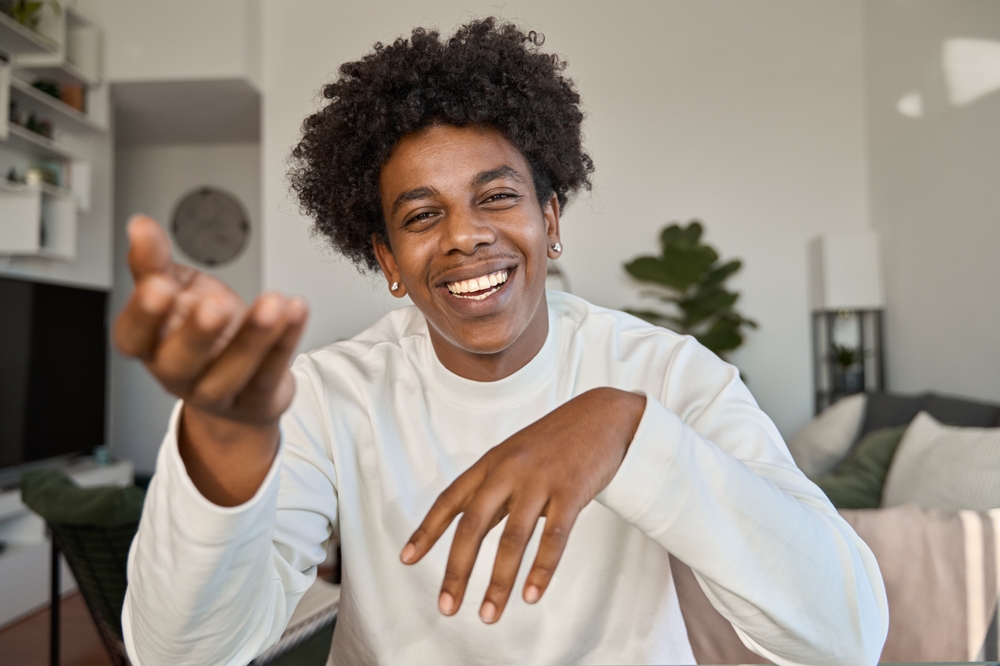1. Having relaxed facial expressions

People with high self-esteem often have relaxed facial muscles, free from tension in the forehead, jaw, or around the eyes. This relaxed state suggests inner calm and self-assurance. Even when concentrating or serious, there’s an absence of a furrowed brow or clenched jaw that might indicate stress or insecurity.
2. Standing tall with shoulders back

People with high self-esteem tend to stand tall with their shoulders back and chest open. This posture not only projects confidence but also helps you feel more confident. This doesn’t mean an exaggerated military-style stance, but a natural, comfortable aura that suggests you’re ready to engage with the world.
3. Making strong eye contact

Maintaining comfortable, steady eye contact is a hallmark of high self-esteem. It shows you’re engaged, present, and unafraid to connect with others. This doesn’t mean staring intensely or never breaking gaze, it’s about finding a balance that feels natural and confident. People with high self-esteem can hold eye contact during conversations without feeling the need to constantly look away.
4. Flashing a genuine smile

A genuine smile, often called a Duchenne smile according to Science Direct, involves not just the mouth but also the eyes. It’s a sign of openness, warmth, and self-assurance. Unlike forced smiles, which might signal discomfort or insincerity, a genuine smile suggests you’re comfortable in your own skin and happy to be where you are.
5. Relaxing their shoulders

We know we said shoulders back—and good posture is certainly important—but people with high self-esteem also tend to have relaxed shoulders. This balance between upright posture and relaxation signals both confidence and ease. Tense or hunched shoulders can indicate stress or insecurity, while relaxed shoulders suggest a sense of calm self-assurance.
6. Opening up their body

This means avoiding crossed arms or legs, which can be seen as defensive postures. Instead, people with high self-esteem stand with their arms at their sides or use open hand gestures when speaking. This openness suggests a willingness to engage and a lack of fear about being vulnerable.
7. Moving with purpose

People with high self-esteem often move in a calm, purposeful manner. They’re less likely to display nervous fidgeting or rushed movements. This doesn’t mean moving slowly, but rather moving with intention. Whether walking across a room or reaching for an object, their movements tend to be smooth and controlled, reflecting inner confidence.
8. Taking up space

High self-esteem often correlates with a willingness to take up physical space. This might mean sitting or standing with a wider stance, or gesturing more expansively when speaking. It’s not about dominating space, but rather feeling comfortable occupying the space you’re in without trying to make yourself smaller.
9. Shaking hands firmly

In cultures where handshakes are common, people with high self-esteem often have a firm, confident handshake. It’s not about squeezing hard, but about offering a solid, brief grip that conveys self-assurance. This gesture suggests you’re comfortable with physical contact and eager to engage with others.
10. Mirroring the body language of others

According to Well+Good, people with high self-esteem are often skilled at both mirroring others’ body language (which builds rapport) and leading with their own gestures. They’re comfortable enough to adapt to social situations while also setting the tone when appropriate. This flexibility in body language shows both social awareness and self-confidence.
11. Facing people directly

When engaged in conversation, people with high self-esteem face others directly. This means turning both their body and face towards the person they’re interacting with, rather than angling away or giving only partial attention. This direct engagement shows confidence in social interactions and a willingness to be fully present.
12. Speaking with a steady voice

While not strictly body language, the way we speak is closely tied to our nonverbal communication. People with high self-esteem often speak in a steady, clear voice. They’re less likely to use filler words like “um” or “uh,” and they don’t tend to end statements with an upward inflection that makes them sound like questions. This vocal confidence complements their body language.
13. Standing or sitting still

The ability to be still and comfortable in one’s own presence is a strong indicator of high self-esteem. This means being able to sit or stand without constant fidgeting, phone-checking, or other nervous habits. It suggests a person is at ease with themselves and doesn’t feel the need to constantly distract themselves or others.
14. Angling their chin up

People with high self-esteem often hold their chin parallel to the ground or slightly elevated. This “chin up” position projects confidence and readiness to face the world. It’s not about looking down on others, but rather about facing forward with assurance. This posture also naturally elongates the neck and straightens the spine, contributing to an overall confident appearance.
15. Having spatial awareness

Those with high self-esteem typically have a good sense of their personal space and respect others’ boundaries as well. They stand at a comfortable distance during conversations—close enough to engage but not so close as to invade others’ space. This shows they’re secure in themselves and don’t need to impose on others physically to feel validated.








